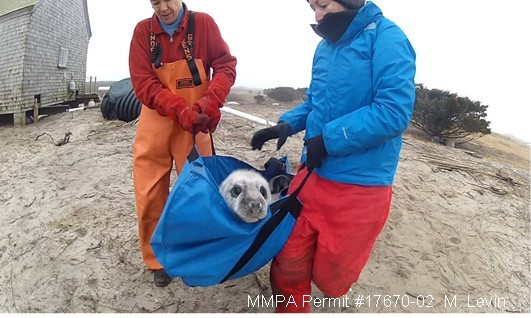Tag reports play an important role in understanding regional movement, health, and disease
Each winter as the days get shorter and temperatures drop, a collaborative group of researchers, veterinarians, and animal care specialists begin to think about spending their days on Muskeget and Monomoy Islands. These locations host the largest gray seal pupping colonies within the US. The short stretch of time after the pups are weaned from their moms but have not yet left to the sea, provides an ideal window for studying the health and movements of these animals. From 2013 on, gray seal pups born off of Cape Cod have been screened for viral infections, immune function, baseline health, contaminant loads, and diet. This multi-organizational effort has been lead by Wendy Puryear and Jon Runstadler. As of 2017, 572 gray seal ups have been part of this study. An important component to all of this work lies in understanding where the seals travel to. Movement data plays a critical role in understanding how and if disease may spread within and between species. It also provides key information toward the interpretation of diet and contaminant exposure. While it’s possible to obtain rich detailed movement data through the use of satellite tags, such an approach is often cost prohibitive and the tags are shed from the animal during the yearly molt. Therefore every animal that is handled during the gray seal pup season receives a unique flipper tag ID. Each time an animal with one of these flipper tags is seen and reported back to the Marine Animal Identification Network, the strength of the collective dataset increases, and with each piece of data our overall understanding of this animal’s role in the greater ecosystem comes into better focus. If you see a tagged animal, be part of the team working toward a better understanding of these animals and please report it back to MAIN.

